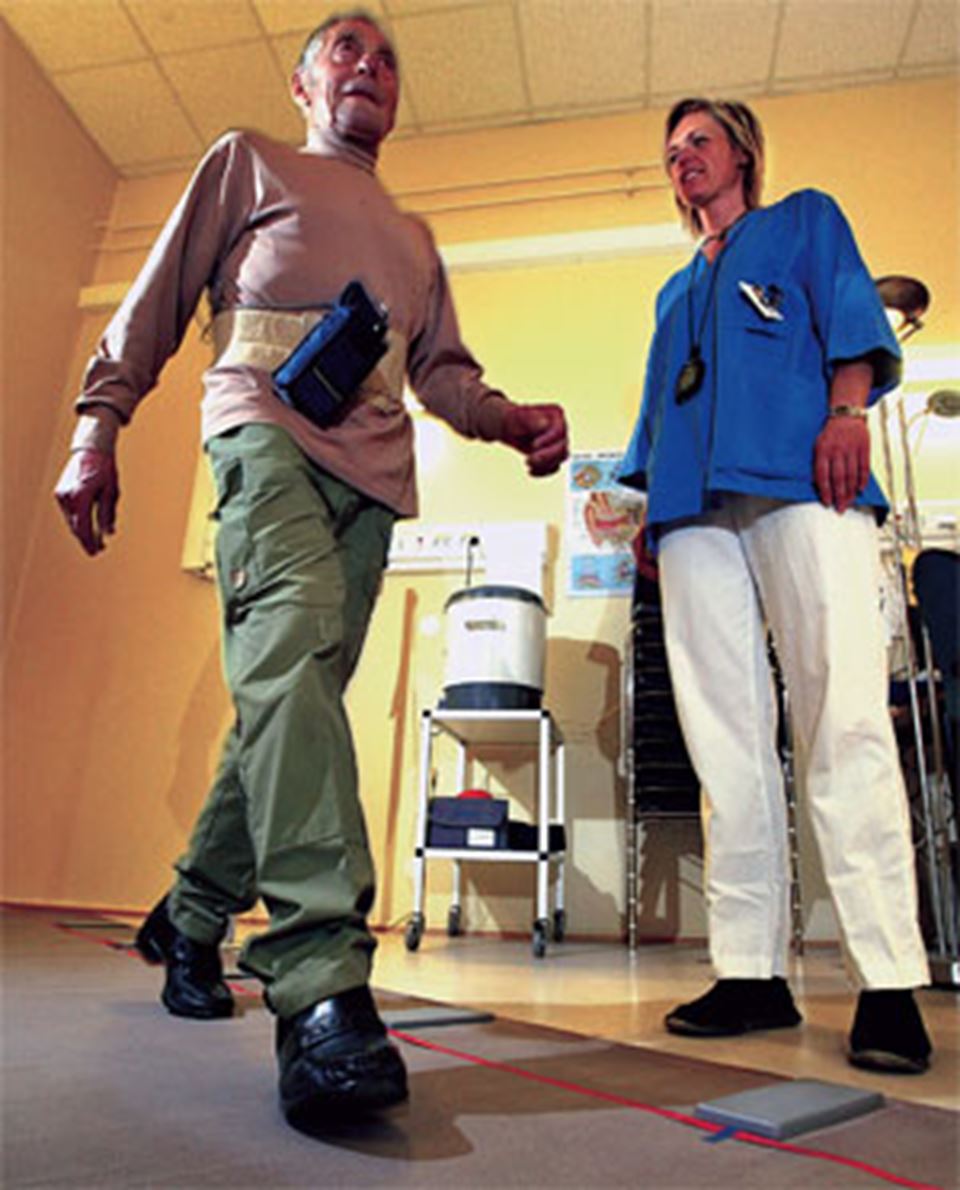Research scientists at NTNU, the University of Bergen and SINTEF are working on ways to detect and measure the minute movements that result in balance and walking problems.
A systematic analysis of elderly people who are vulnerable to falls is currently underway at a laboratory at St. Olav’s Hospital. The analysis involves the use of an instrument that registers movement (an accelerometer) and an electronic walkway. The instrument is attached to the back of the subjects being tested, and measures how the subject moves during different circumstances. The walkway registers pressure, stride length, foot positioning and foot strain.
These facts combine to provide information that can describe balance problems experienced by people who have trouble walking, such as people with impaired vision,weak musculature or dementia. Until now, the focus has been on the diagnosis of diseases that lead to walking difficulties, with little focus on the functional aspects of the disease. But to design and adjust the treatment of patients with movement problems, doctors and health care workers need information on balance and walking functionality.
SENSOR
Terje Mugaas and Pål Liljebäck of SINTEF ICT have been working to further develop the instrument that can detect and record movement patterns of the subjects being tested. The new instrument is more accurate than previous attempts to measure movements and uses wireless technology to send the results computer in real time. SINTEF has developed an algorithm on the computer that uses the instrument movements to estimate velocity and position.
Cybernetic experts began work on the project last year with the development of a user interface. A grant this year from the Research Council of Norway enabled work to begin on the development of a sensor. One of this instrument’s major advantages is that it is portable and can easily be taken to the patient, as opposed to a camera-based measuring system that is permanently set up in a laboratory.
“By using this instrument, we are able to measure balance,” says Mugaas. “It measures the adjustments a person makes to maintain balance when he or she is standing still, and when he or she is walking. An elderly person with movement difficulties shows much greater variability than younger people in walking patterns between each step they take”.
These measurements enable medical personnel to detect movement problems and determine which treatment might help.
POSSIBLE APPLICATIONS
The instrument has so far been tested on patients with walking problems, falling problems or vision difficulties. However, the method has also been successfully tested on measuring the balance and walking of children suffering from dyslexia.
Dyslexic children have greater difficulty than healthy children in maintaining their balance with their eyes open. A study is currently in progress to examine people with cataracts both before and after their operation to see how sight influences their walking.
The idea to use an accelerometer to measure patients’ balance originates from physiotherapist and Professor Rolf Moe-Nilssen of the University of Bergen. Jorunn Helbostad, a researcher and physiotherapist at St. Olav’s Hospital, has contributed to further development of the method and has used it in her Ph. D work. A prototype of the new product was completed in early June and will now be used in further studies.
By Åse Dragland
The post Measures your walk appeared first on Geminiresearchnews.com.

